Gallery Network
Artist Quayola On Why Algorithmic Art Is Like Impressionism
In collaboration with Artnet and Times Square Arts, the digital artist is lighting up Times Square with algorithm-generated storms.
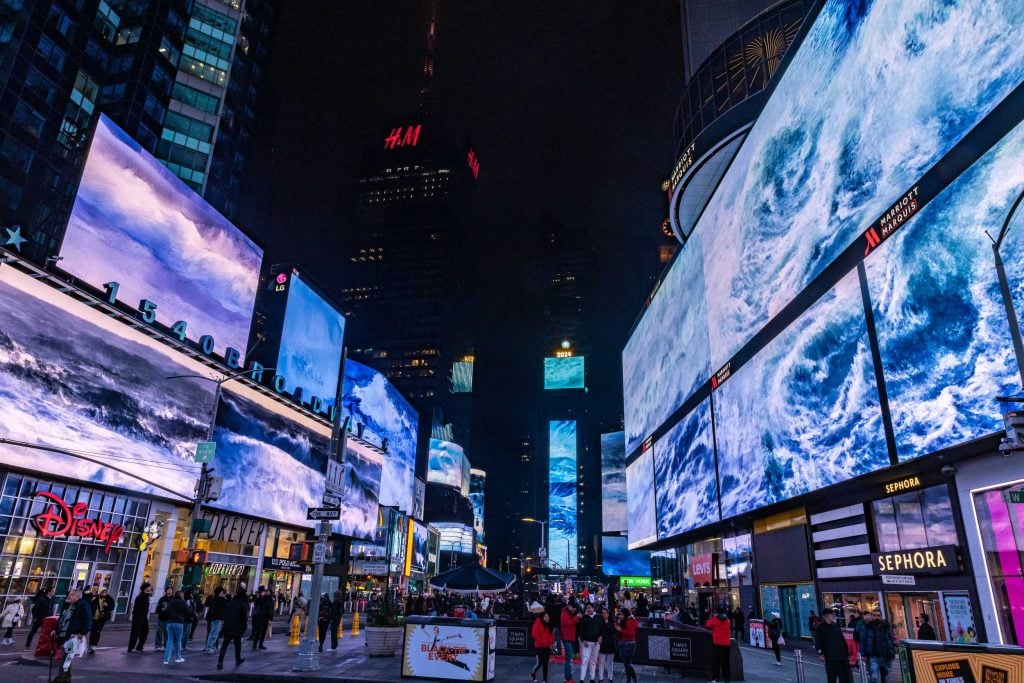
As an ardent advocate for digital art, I am convinced that given the ubiquitous nature of the technology, it emerges as the native medium for artists to express themselves in our time.
One of the common misconceptions about digital art is the notion that it is encased in mobile and laptop screens. But in the heart of New York City lies the largest canvas imaginable for any artist: 98 digital billboards spanning from 41st to 49th Streets in the iconic Times Square.
Since 2012, Times Square Arts has showcased the works of more than 135 artists with the nightly art program Midnight Moment. The number of participating billboards has also grown to 98, with an impressive 35 screens added during the tenure of current director Jean Cooney. On 364 nights of the year—except for New Year’s Eve when it’s reserved for the Ball Drop—from 11:57 PM to midnight, you can immerse yourself in a sea of screens choreographed by a different artist each month.
This March, Artnet has joined forces with Time Square Arts to bring artist Quayola’s mesmerizing series “Storms.” Artnet’s co-presentation marks the beginning of an ongoing partnership that celebrates digital art in the heart of New York City, and the commitment to enriching dialogues at the intersection of art and technology.
In his artistic practice, Quayola employs technology as a tool, exploring the interplay of dichotomies: the tangible and the simulated, figurative and abstract. Storms comes to life with high-definition footage of stormy seas in Cornwall, England, captured by contemporary technology. Quayola reimagines canonical imagery using various custom computer softwares.
I caught up with Quayola for a virtual conversation and to see some behind the scenes techniques, gaining insight to his creative process.
What inspired the Storms?
Storms is a homage to romantic painter J. W. Turner and his depiction of stormy seas. I love the Turner sea paintings in the gallery at the Tate Britain museum; the brushstrokes transition from figurative to abstract, making it incredibly powerful.
What interests me is precisely this modus operandi of the artist engaging with nature to find new synthesis of representation. My work, therefore, falls within this historical tradition, albeit through a lens mediated by new technological apparatuses.
Could you walk us through the journey of creating Storms?
I was chasing storms on the coast of Cornwall in order to capture ultra-high-definition videos of tumultuous seas in various lighting and meteorological conditions. Various computer-vision and machine-learning strategies have been used to extract data from the original videos, from describing the movement of the waves to extrapolating color palettes and features from the landscapes. Subsequently the data served as guidance for my pictorial simulations, or as I call them, computational paintings.
Ultimately, I am interested in creating computational systems to translate specific natural behaviors and phenomena into new forms of pictorial representation.
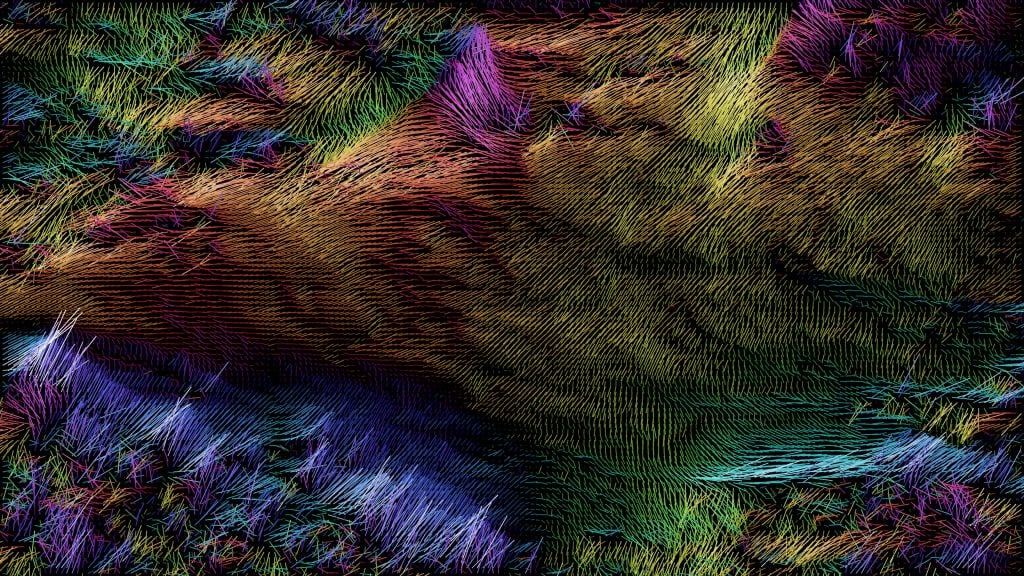
Courtesy of Quayola Studio.
I absolutely love the juxtaposition of the crashing waves from the “Storms” series amid all the illuminated digital billboards in Times Square. As one of the most iconic places in the world, it sees over 300,000 people passing through each day. What are your thoughts?
Although I have been to New York many times, not so much to Times Square, I didn’t spend much time there, personally. What interests me are the collective memories about Times Square; it is iconic, and I feel very honored to show my work here.
It is rare to have the opportunity to work on such scale; in a way, it transcends the idea of showing a video work. It is almost like contemplating a landscape. In Storms, I wanted to create an experience that somehow simulates the original power of the seas, an experience at a scale that recalls the contemplation of a vast landscape.
Also, I think there is another interesting connection between the ever-changing lights of Times Square and the scintillating reflections on the surface of the sea… almost like the lights are pulsating on the waves, which I cannot wait to see in person.
Where does your interest in nature come from?
I started to play around with a computer as a teenager when my brother bought one in the late 90s. The evolution of electronic music during that era also sparked my fascination with utilizing technology as a means to explore new territories. The idea that technology can simulate complex human/nature behaviors always interests me.
However, in my work, the focus on nature is always linked to the historical tradition of landscape representation; particularly, a modernist tradition where nature becomes a vehicle for discovering new aesthetics and gradually moving towards total abstraction. I speculate on new forms of landscape painting, reflecting on how technology is rapidly changing the way we observe and perceive the world around us, and ultimately, reality itself.
The genre of landscape is very much present in your work, with particular reference to the en plein air of the late 19th century.
Yes, I’m fascinated by the Impressionist painters and their en plein air explorations. On one side using nature as a vehicle to discover new modes of visual synthesis, and on the other hand, having the process itself, the actual painting gestures, translated onto the canvas. The artwork which portrays both its subject as well as the process behind its making has always been very interesting to me, and something which is constantly driving my work.
In my work I essentially explore new forms of representation and document new types of gestures.
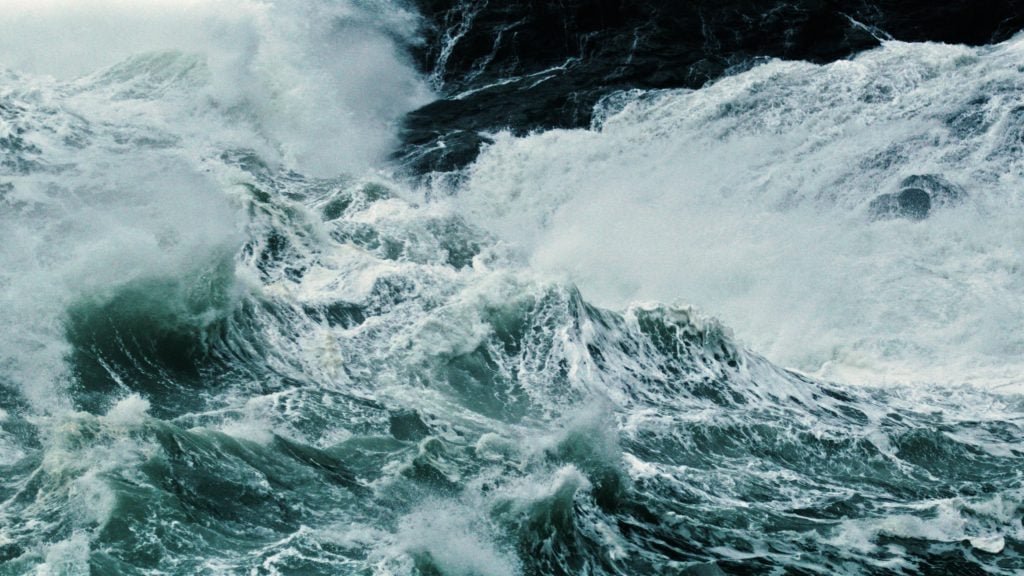
Courtesy of Quayola Studio.
As philosopher Baldine Saint Girons once asked: “How it is possible to merge and connect algorithms with the sublime (whether already generated or on the brink of its inception)?”
Your use of technology to translate the sublime of natural forces prompts a perennial discussion between real and artificial. What are your reflections on this debate, particularly regarding the integration of technology into the portrayal of nature’s sublimity?
I believe there has never been a time in which the debate of “real vs artificial” has been more relevant than now and the years to come.
In my work, I try to reflect on the fact that we live in a time permeated by new technologies, where the human gaze hybridizes with that of technological apparatuses. Technology, as an amplifier of human perceptions, impresses upon reality a mode of vision that is both alien and renewed.
The machine and its language, the code, bear an aesthetic innovation that takes shape in a new gestuality. My artistic act disengages from manual action, replaced by the algorithm that articulates a new kind of non-human virtuosity. Data becomes expressive units.
The marriage of artistic sensibility and irreducible computational potential generates a renewed wonder, or rather a new form of the sublime: the technological sublime. The new sublime is no longer an experience relative to the power of nature, but rather a disturbance and fascination for the new technological languages.
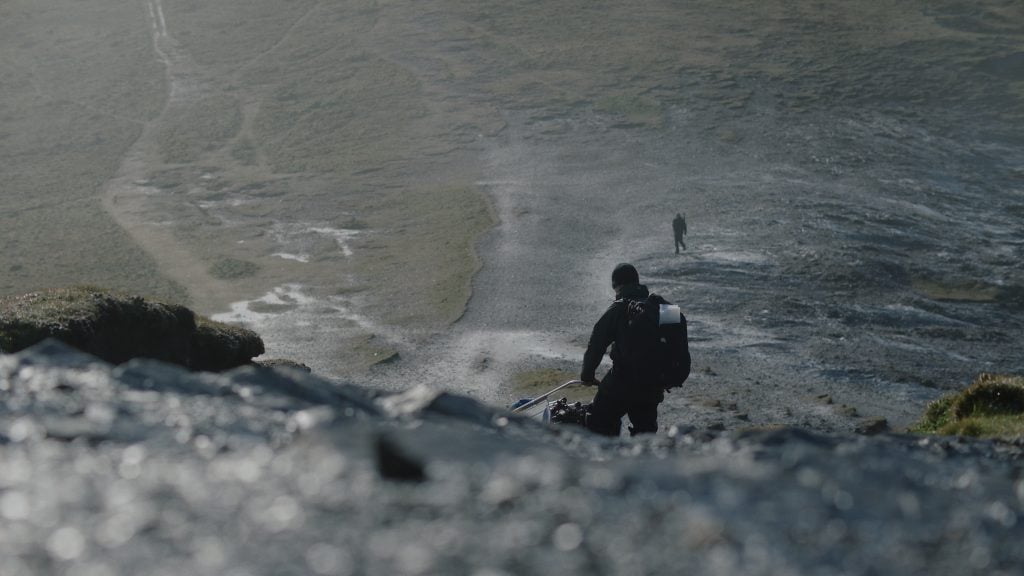
Courtesy of Quayola Studio.
As a successful digital artist, you’ve established a great career. What are your insights into fostering a sustainable career for artists in the digital realm?
There is a book that often I go back to, which has been a great source of inspiration called The Lives by Giorgio Vasari written in Florence during the Renaissance. The book delves into the difficulties, challenging lives and crazy emotional adventures of all the Italian Renaissance Masters.
The difficulties of these artists’ lives are an incredible example of passion and dedication that transcends beyond the concept of a “sustainable career.”
For example, If you read the story of Brunelleschi, he basically spent his whole life, well, a majority of his time just trying to convince the city of Florence to let him build the Dome. Ultimately, in order to create something special you need to make great sacrifices, put in a truly enormous amount of work, and over a long period of time.
To me, it has been like chasing and developing my own obsession. It is so much bigger than you, and that gradually takes place. Finally, it becomes valid and more coherent. It is about something that you care so much about that you get tormented. The concern is not about building a sustainable career, but about my own obsession and how to pursue it. You are fighting with the rest of the world to make it happen, and as your obsession grows, it doesn’t get easier.
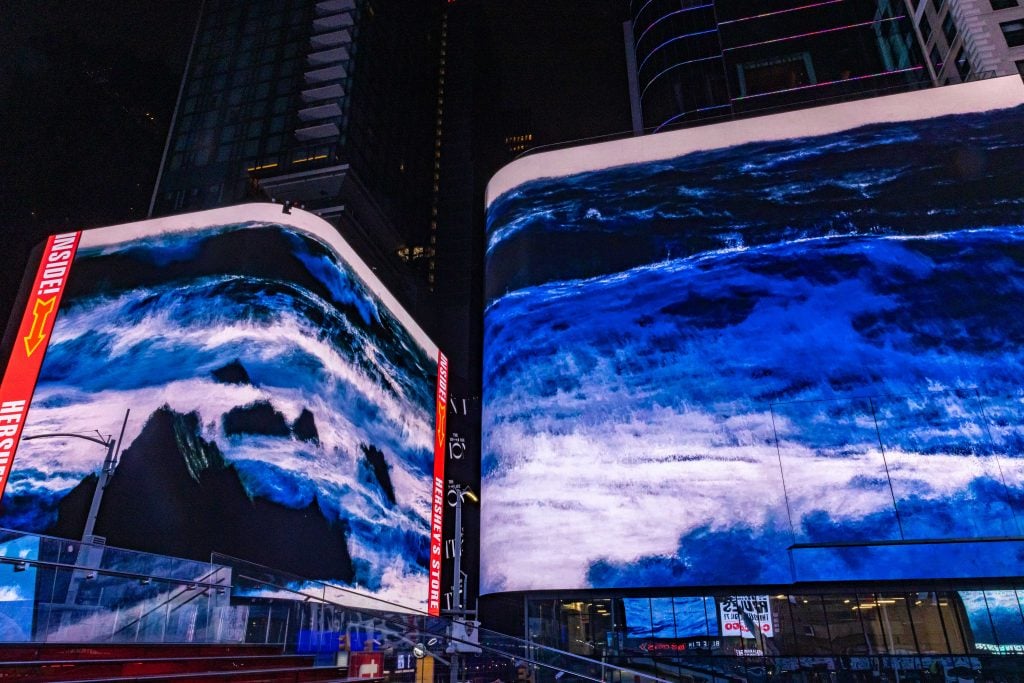
“Quayola: Storms” March 1-31, 2024 in Times Square. Pictures courtesy of Times Square Arts
Photography by Michael Hull courtesy of Times Square Arts
That is the best answer and there really is no clear answer! What are the areas of fascination that are inspiring you at the moment?
Robots…I am currently working and researching on several topics using different types of robots… from sculpting large blocks of marble in Carrara, knitting complex datasets or using robotic dogs to laser-scan natural landscapes.





